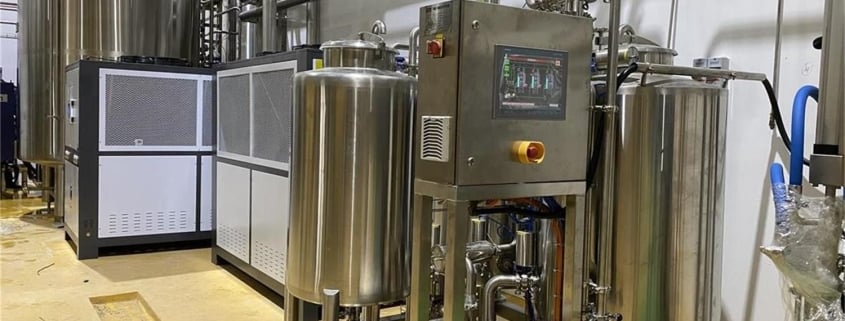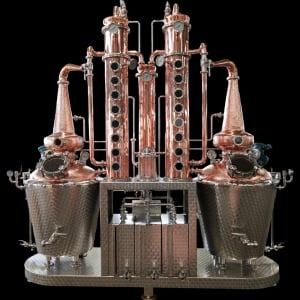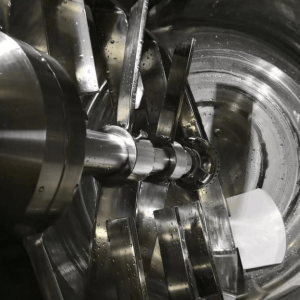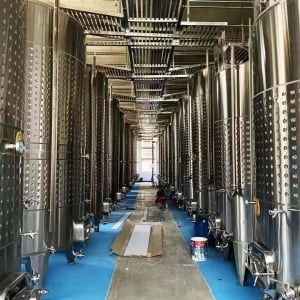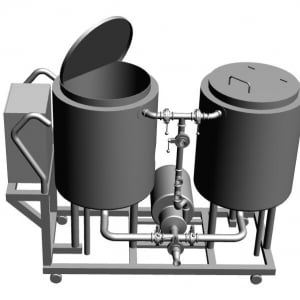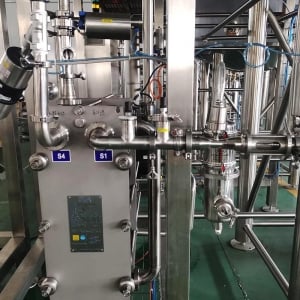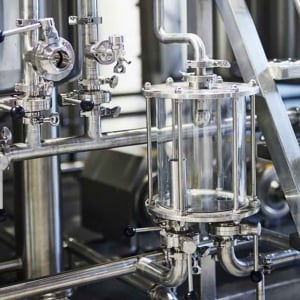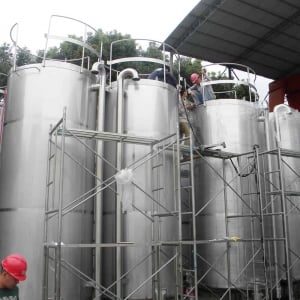Understanding Beer Making Equipment
Overview
Brewing your own beer at home or starting a microbrewery is an exciting venture. But like any good recipe, the tools you use can make or break the outcome. Beer making equipment ranges from basic kits for beginners to advanced systems for commercial brewers. Whether you’re just starting out or looking to upgrade your brewery, understanding the right equipment for your needs is crucial. This guide dives deep into every aspect of beer making equipment, helping you navigate the options, understand the process, and make informed decisions.
The Essential Beer Making Equipment Guide
When it comes to brewing beer, the right equipment is key. Imagine trying to build a house without a hammer—it’s not going to happen. Similarly, brewing beer without the correct tools will lead to subpar results. Below is a comprehensive guide on the essential beer-making equipment.
Malt Mill
The malt mill is where the brewing process begins. It crushes the grains to expose the starches that will later be converted into sugars during mashing. The type of mill you choose can impact the efficiency of your brewing process. A two-roller mill is standard for homebrewers, while larger operations may use a three-roller or even a four-roller mill for better control over the crush size.
Mash Tun
The mash tun is the vessel where the crushed grains are mixed with hot water, activating enzymes that convert starches into fermentable sugars. Insulated mash tuns help maintain a consistent temperature, which is crucial for enzyme activity. Some advanced systems even feature built-in heating elements and recirculation pumps to ensure even heat distribution.
Boil Kettle
After mashing, the wort (the liquid extracted from the mashing process) is boiled in the kettle. This is where hops are added, contributing to the beer’s bitterness, flavor, and aroma. The kettle needs to be large enough to accommodate your batch size, with some extra space to prevent boil-overs. Many brewers prefer stainless steel kettles for their durability and ease of cleaning.
Fermentation Vessels
Once the wort is cooled, it’s transferred to a fermentation vessel, where yeast is added. This is where the magic happens—the yeast consumes the sugars, producing alcohol and carbon dioxide. Fermentation vessels come in various shapes and sizes, from simple plastic buckets for beginners to stainless steel conical fermenters for serious brewers. Temperature control is critical during fermentation, and many advanced systems include cooling jackets or temperature probes.
Airlock
An airlock allows carbon dioxide to escape during fermentation while keeping oxygen and contaminants out. It’s a small but essential piece of equipment that prevents your beer from becoming oxidized or infected.
Heat Exchanger
After boiling, the wort needs to be cooled quickly to avoid contamination and prepare it for fermentation. A heat exchanger, such as a plate chiller or an immersion chiller, is used to rapidly bring the temperature down. Plate chillers are more efficient and are typically used in commercial setups, while immersion chillers are popular among homebrewers.
Brewing Software
Brewing software isn’t a physical piece of equipment, but it’s an invaluable tool for planning and tracking your brew day. These programs can help you calculate ingredient amounts, mash temperatures, and even predict the final alcohol content of your beer.
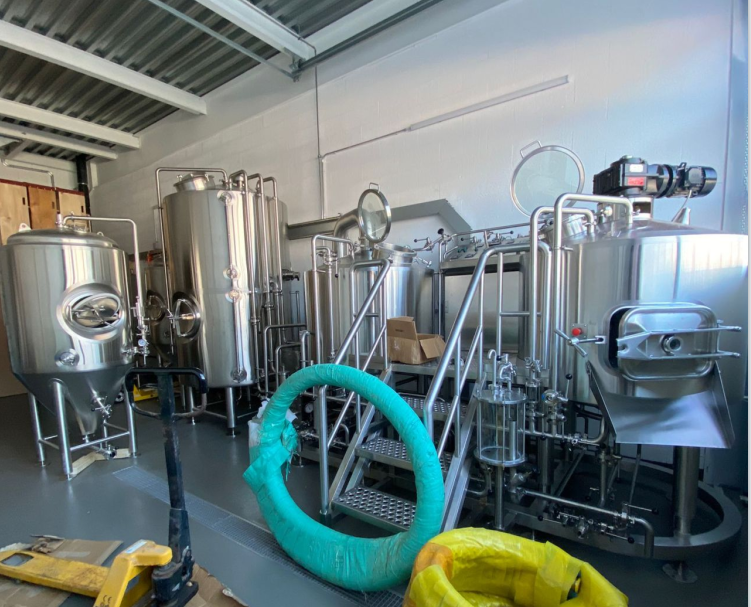
Beer Making Equipment Types
Choosing the right beer-making equipment involves understanding the different types available. The table below breaks down the equipment types, features, and their typical uses.
| Equipment Type | Description | Use | Material |
|---|---|---|---|
| Malt Mill | A device used to crush malted grains. | Prepares grains for mashing. | Steel or aluminum rollers, wood/plastic frame |
| Mash Tun | A vessel used to mash the crushed grains with hot water. | Converts starches to fermentable sugars. | Stainless steel or insulated cooler |
| Boil Kettle | A pot used to boil wort and add hops. | Sterilizes wort and extracts hop flavors. | Stainless steel, copper |
| Fermentation Vessel | A container where wort is fermented by yeast. | Turns wort into beer by fermenting sugars. | Plastic, glass, or stainless steel |
| Heat Exchanger | A device to rapidly cool wort after boiling. | Prevents contamination and prepares wort for fermentation. | Copper or stainless steel |
| Airlock | A small device that allows CO2 to escape while keeping air out. | Prevents oxidation and contamination during fermentation. | Plastic or glass |
| Brewing Software | Digital tools to plan and monitor the brewing process. | Helps in recipe formulation and process tracking. | N/A |
The Beer Brewing Process: Step-by-Step Guide
Brewing beer might seem like a complex task, but breaking it down into steps makes it manageable. Let’s walk through the beer brewing process, using the equipment mentioned above.
Step 1: Milling the Grains
The brewing process starts with milling the malted barley. The malt mill crushes the grains to expose the starches inside. The goal is to crack the grains without turning them into flour, which could clog the mash tun. The quality of your crush will impact the efficiency of your mashing process, influencing the final alcohol content and flavor of your beer.
Step 2: Mashing
Once the grains are milled, they are transferred to the mash tun. Hot water is added to the grains, usually between 148-158°F (64-70°C). This activates enzymes in the malt, which convert the starches into fermentable sugars. The mash tun’s insulation or heating elements help maintain a steady temperature, which is critical for consistent enzyme activity. Mashing typically lasts 60-90 minutes, depending on the recipe.
Step 3: Lautering and Sparging
After mashing, the sweet liquid (wort) is separated from the grain husks in a process called lautering. The wort is then sprayed with additional hot water in a process called sparging. This ensures that all the fermentable sugars are extracted from the grains. The wort is then collected and transferred to the boil kettle.
Step 4: Boiling the Wort
The wort is boiled for 60-90 minutes. During this time, hops are added at various stages to contribute bitterness, flavor, and aroma to the beer. The longer the hops are boiled, the more bitterness they impart. Late hop additions, usually in the last 15 minutes, add more aroma than bitterness. The boil also serves to sterilize the wort, killing any unwanted bacteria or wild yeast.
Step 5: Cooling the Wort
After boiling, the wort must be cooled quickly to a temperature suitable for yeast fermentation. This is where a heat exchanger, like an immersion or plate chiller, comes into play. The wort is cooled to around 68°F (20°C) for ales or 50°F (10°C) for lagers. Rapid cooling is crucial to prevent contamination and maintain the beer’s clarity.
Step 6: Fermentation
The cooled wort is transferred to a fermentation vessel, and yeast is added. The vessel is sealed with an airlock to allow CO2 to escape while preventing contaminants from entering. Fermentation typically lasts 1-2 weeks for ales and 4-6 weeks for lagers. Temperature control during this stage is essential for producing the desired beer flavor.
Step 7: Conditioning and Packaging
After fermentation, the beer is conditioned for a few more weeks to allow flavors to mature. It can then be packaged into bottles, cans, or kegs. Some brewers also carbonate their beer during this stage, either naturally through priming sugar or force-carbonating with CO2.
Customizing Your Beer Making Equipment
When setting up a brewery, customization is often necessary to fit the available space, budget, and brewing goals. The table below provides insights into various aspects of customization.
| Aspect | Details | Considerations |
|---|---|---|
| Capacity | Size of brewing vessels and overall output. | Choose based on batch size goals; large batches require bigger vessels. |
| Space | Physical footprint of equipment. | Consider ceiling height, room layout, and workflow efficiency. |
| Design | Aesthetic and functional aspects of equipment. | Match with brewery theme; ergonomic design for ease of use. |
| Layout | Arrangement of equipment within the brewing space. | Optimize for smooth movement and operation; consider future expansions. |
| Customization | Tailoring equipment to specific needs (e.g., additional ports, sight glasses, custom fittings). | Enhances control and efficiency; may increase costs and complexity. |
Choosing a Supplier for Beer Making Equipment
Selecting the right supplier for your beer-making equipment is as crucial as choosing the equipment itself. Here’s a comparison of factors to consider when choosing a supplier:
| Factor | Details | What to Look For |
|---|---|---|
| Reputation | Supplier’s standing in the market. | Look for reviews, testimonials, and industry awards. |
| Price Range | Cost of equipment offered. | Compare prices across multiple suppliers, but don’t sacrifice quality for cost. |
| mCustomer Service | Support provided during and after purchase. | Responsive and knowledgeable customer support is key. |
| Warranty and Guarantees | Protection against equipment failures. | Ensure adequate warranty periods and clear terms. |
| Customization Options | Ability to tailor equipment to your needs. | Suppliers who offer customization are preferable if you have specific requirements. |
| Delivery and Installation | Logistics of getting the equipment to your location and setting it up. | Check delivery times, costs, and whether installation services are provided. |
How to Operate Beer Making Equipment Efficiently
Operating beer-making equipment requires not only understanding the brewing process but also knowing how to handle the equipment effectively. Here are some key points to consider:
Understanding Equipment Capabilities
Each piece of equipment has its own operational parameters. Knowing these limits—such as the maximum grain bill for your mash tun or the boil kettle’s heat-up time—helps you brew more efficiently. For example, overloading your mash tun can lead to poor conversion efficiency, while underloading it can cause heat loss.
Maintaining Temperature Control
Temperature control is a critical aspect of brewing. During mashing, the temperature needs to be within a specific range to activate enzymes. During fermentation, different yeast strains have optimal temperature ranges that affect the flavor and quality of the beer. Investing in a good thermometer and considering automated temperature controls can make a big difference in the consistency of your brews.
Regular Cleaning and Maintenance
Cleanliness is next to godliness in brewing. Regular cleaning of your equipment prevents contamination and ensures that your beer tastes as intended. For instance, residual yeast or wort in a fermentation vessel can spoil future batches. Similarly, cleaning your heat exchanger after each use prevents the buildup of proteins that can lead to off-flavors.
Automation and Monitoring Tools
With modern technology, many aspects of brewing can be automated. Tools like temperature controllers, automated pumps, and digital monitors can take a lot of the guesswork out of the process, allowing for more consistent results. However, automation also requires a good understanding of the equipment to troubleshoot any issues that might arise.
Advantages of Beer Making Equipment
Investing in the right beer-making equipment can bring several advantages. Here’s a breakdown of some key benefits:
| Advantage | Details |
|---|---|
| Improved Consistency | High-quality equipment ensures that each batch of beer is consistent in flavor, color, and alcohol content. |
| Increased Efficiency | Advanced equipment like multi-roller mills and automated mash tuns increase the efficiency of the brewing process, saving time and resources. |
| Better Flavor Control | Equipment like temperature-controlled fermentation vessels allows brewers to experiment with different yeast strains and fermentation profiles. |
| Scalability | Professional-grade equipment can easily be scaled up as your brewing operation grows, allowing for larger batch sizes without sacrificing quality. |
| Professional Appearance | Having polished stainless steel equipment gives a professional look to your brewery, which can impress customers and investors alike. |
Comparing Beer Making Equipment: Pros and Cons
When selecting beer-making equipment, it’s essential to weigh the pros and cons of each type to make an informed decision. Here’s a detailed comparison:
| Equipment | Pros | Cons |
|---|---|---|
| Malt Mill | High efficiency in crushing grains, adjustable crush size. | Requires regular maintenance, can be expensive. |
| Mash Tun | Consistent temperature control, easy to use. | Large footprint, can be costly for insulated models. |
| Boil Kettle | Durable, excellent heat distribution. | Heavy, may require special burners for proper heating. |
| Fermentation Vessel | Precise temperature control, easy to clean (stainless steel models). | Stainless steel versions can be expensive, glass versions are fragile. |
| Heat Exchanger | Rapid cooling, efficient use of water. | Plate chillers can be difficult to clean, immersion chillers may require more time to cool larger batches. |
| Airlock | Simple, inexpensive, effective at preventing contamination. | Needs to be checked regularly for blockages, plastic versions can crack. |
| Brewing Software | Simplifies recipe development, accurate calculations. | Requires a learning curve, may have subscription fees. |
Installation, Operation, and Maintenance of Beer Making Equipment
Understanding the installation, operation, and maintenance of beer-making equipment is crucial for running an efficient and successful brewing operation. Here’s a breakdown:
| Aspect | Details | Best Practices |
|---|---|---|
| Installation | Equipment installation involves setting up the brewery layout, connecting utilities (water, gas, electricity), and calibrating the equipment. | Hire professionals for large installations; ensure proper ventilation and drainage. |
| Operation | Day-to-day operation includes running the equipment, monitoring temperatures, and ensuring that the brewing process is on track. | Keep detailed records of each brew, including any deviations from the plan. |
| Maintenance | Regular maintenance includes cleaning all equipment thoroughly after each use, checking for wear and tear, and calibrating instruments. | Establish a maintenance schedule; replace worn parts immediately to avoid downtime. |
How to Choose a Beer Making Equipment Supplier
Choosing the right supplier for your beer-making equipment involves more than just looking at prices. Consider the following factors:
| Factor | Details | Tips for Selection |
|---|---|---|
| Experience | A supplier with a long history in the industry is likely to offer reliable products and knowledgeable support. | Look for companies with a proven track record and strong references. |
| Range of Products | Suppliers that offer a wide range of equipment can provide everything you need from one source, simplifying procurement and logistics. | Check for a supplier that offers both entry-level and advanced equipment options. |
| Customer Support | Good customer support can make a huge difference, especially when you need help troubleshooting issues or making decisions about new purchases. | Test their responsiveness before committing; ask for case studies or customer testimonials. |
| Custom Solutions | Some suppliers offer customized equipment solutions tailored to your specific brewing needs and space constraints. | If you have specific needs, choose a supplier that can provide bespoke equipment solutions. |
| Pricing and Financing | Competitive pricing is important, but so is the availability of financing options that can help you spread out the cost of expensive equipment. | Negotiate terms and look for suppliers that offer leasing or financing plans. |
FAQs
Here are some frequently asked questions about beer-making equipment, answered in a simple and straightforward manner.
| Question | Answer |
|---|---|
| What is the most essential piece of beer-making equipment? | The fermentation vessel is arguably the most crucial, as this is where the wort turns into beer. Without proper fermentation, you won’t get the desired alcohol content or flavor. |
| How much does it cost to set up a home brewery? | Costs can vary widely depending on the size and quality of equipment. A basic homebrew setup might cost around $300-$500, while a more advanced setup could run several thousand dollars. |
| Is stainless steel better than plastic for brewing? | Stainless steel is more durable, easier to clean, and less likely to retain odors or flavors. However, plastic is cheaper and can be a good choice for beginners. |
| Can I brew beer without a heat exchanger? | Yes, but a heat exchanger speeds up the cooling process, reducing the risk of contamination and improving the clarity of your beer. |
| What are the maintenance requirements for brewing equipment? | Regular cleaning is essential, especially after each use. You’ll also need to check for wear and tear on parts like gaskets, seals, and hoses, and replace them as necessary. |
| Do I need brewing software? | While not essential, brewing software can make the process easier, especially for tracking recipes, calculating ingredients, and ensuring consistency. |
Conclusion
Brewing beer is as much an art as it is a science, and having the right equipment can make all the difference between a good beer and a great one. Whether you’re a homebrewer looking to expand your setup or a budding microbrewer aiming to scale up, understanding the various beer-making equipment and how to use them effectively is crucial. From the malt mill to the fermentation vessel, each piece plays a vital role in the brewing process, and choosing the right supplier can ensure you get the best equipment for your needs. Keep this guide handy as you explore the world of beer brewing, and remember.

